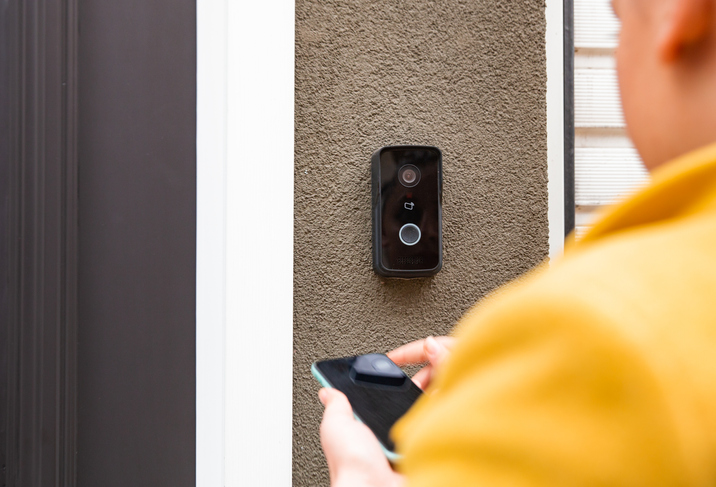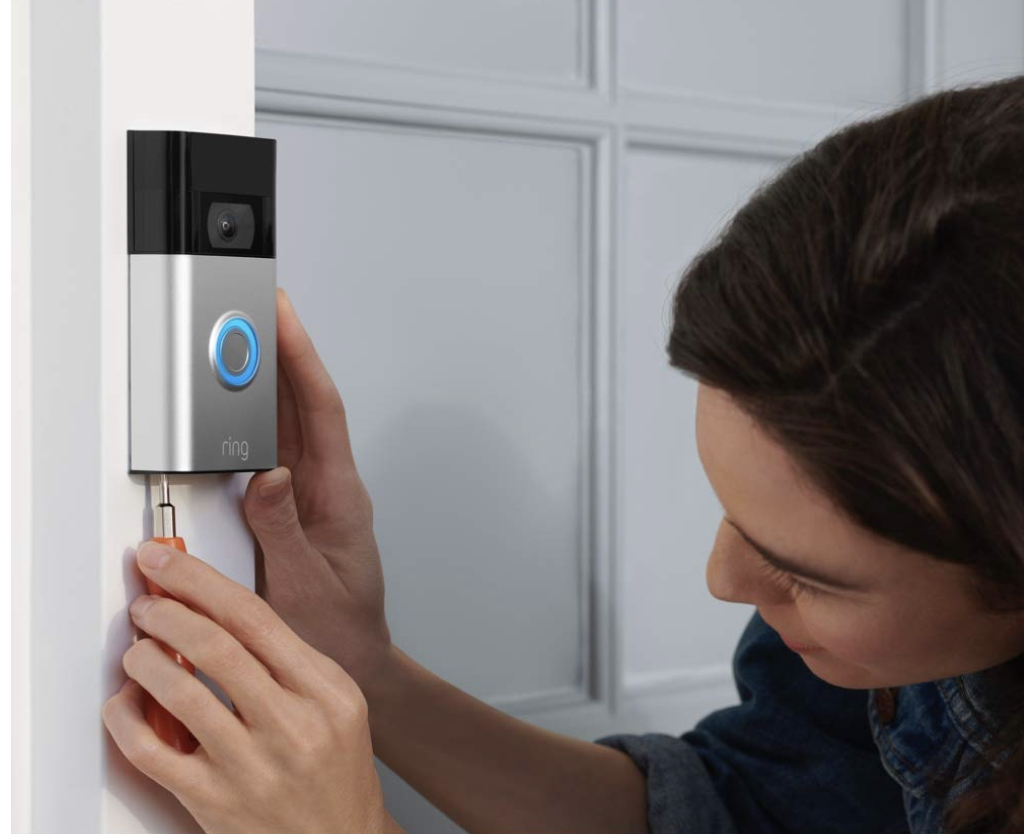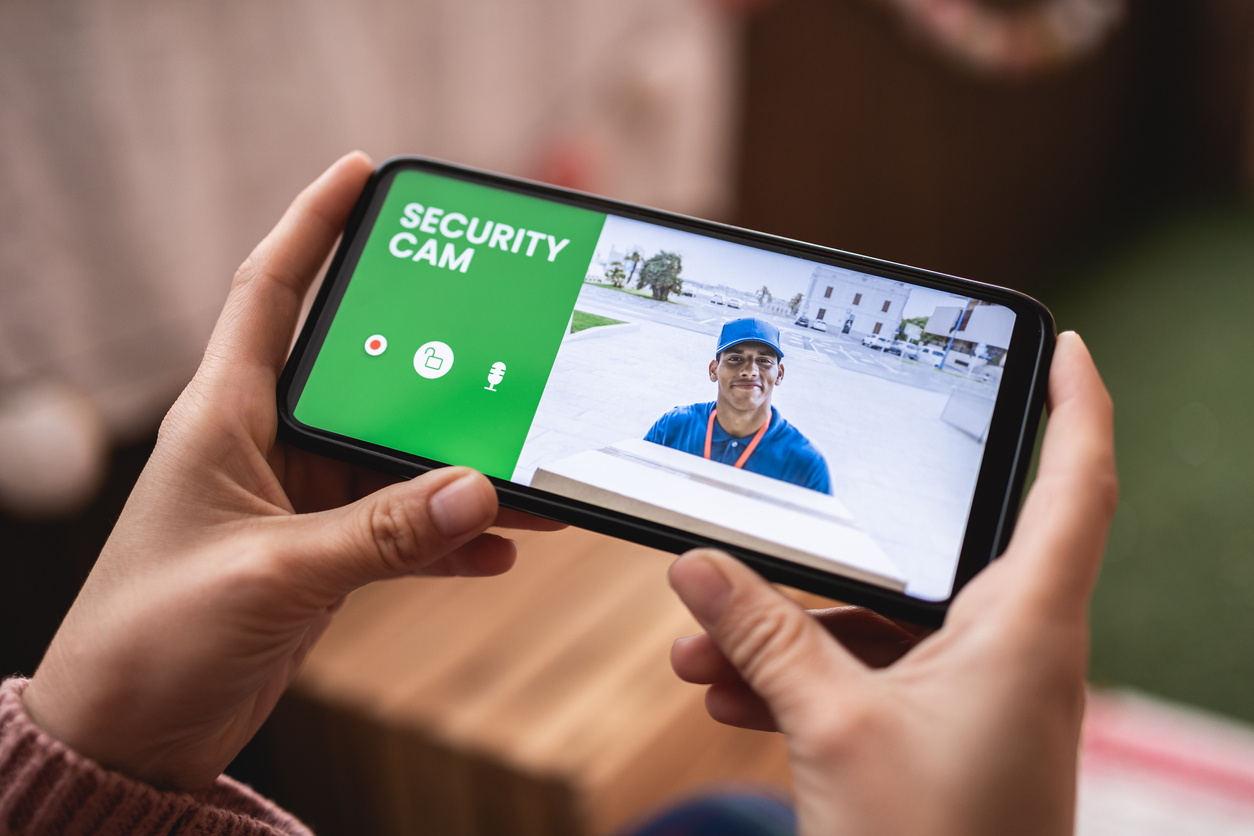

We may earn revenue from the products available on this page and participate in affiliate programs. Learn More ›
When modern video doorbells first hit the market, they seemed like no-brainers. Other than being unbelievably expensive (at the time), their ability to detect motion, record visitors, and allow users to talk back and forth with folks on the front step seemed like we were jumping into the future. Yet, while all of those aspects of these gadgets have their benefits, there are some real-life downsides to having a video doorbell, and we’ll discuss them in detail here.
RELATED: Our Favorite Video Doorbell Offers Crisp Clarity and Increased Security Features
1. Say goodbye to privacy.

We just got a puppy. We’re not ready for him to use the pen along with the bigger dogs, so we’re walking him in the front yard for the time being. I can’t explain how many videos there are in my archive documenting me having a one-way baby-talk conversation with Tony as we celebrate him doing “big boy pee pees” outside. Those were conversations I thought we had in private.
Also, say you need to sneak out for a private conversation with your spouse out of earshot of the children, or you need to schedule a doctor’s appointment for an embarrassing ailment. Do that in front of a video camera, and that conversation is in digital space forever.
2. There are constant notifications.

The incessant notifications can be absolutely maddening. A game of catch in front of a video doorbell can result in 15 to 20 notifications, all of which correspond to a 1- to 2-minute video. And let’s face it, some of us don’t want our “athleticism” recorded anymore.
But also, any time a tree blows in the wind or a cat walks by, these cameras may send a notification. Users can silence them and adjust the sensitivity and range settings, but it can be hard to dial them back. The video doorbell needs to pick up suspicious activity, but it doesn’t need to record every mockingbird that perches on the fence.
One night, a spider built a nest on one of our cameras. My phone would not stop buzzing and every image was spine-chilling.
RELATED: Is There a Security Camera That Works Without Wi-Fi?
3. The batteries are a consideration.

There are different ways to install a video doorbell, both stand-alone and wired. For stand-alone models, battery life is a consideration. Particularly for homes that don’t already have hardwired doorbells installed, battery-powered doorbells are a fine solution. That said, they die and can be a little bit of a pain in the neck to recharge. Charging them up generally requires removing them from the wall with a special screwdriver and bringing them inside.
There are some doorbell models with solar compatibility, and users should consider these if they don’t have a hardwired connection. Just keep in mind that these solar panels are an additional purchase and won’t work to their full potential if they’re in a shady yard or on the north side of the home.
RELATED: The Best Home Security Systems, Picked by Editors
4. They have monthly subscriptions.

The video doorbells themselves have become much more affordable, with some models costing well under $100. However, it’s important to understand how these devices work.
The consumer needs a doorbell, which used to cost hundreds and hundreds of dollars. The manufacturer now sells them cheaper, making them more obtainable. But for full access to recordings (not just a “live view”), many manufacturers require a monthly subscription. So, while a doorbell may cost as little as $40 or $50, the $5 to $20 recurring payment the company receives every month is what’s really feeding the machine.
Is it worth it? Ask anyone whose video has helped solve a hit-and-run, burglary, or other situation, and they’ll undoubtedly say yes.
RELATED: How Much Does a Ring Doorbell Cost?
5. You’ll often miss rings.

This one is relative to the person, but a growing number of millennials and Gen Z’ers prefer their phones to be on silent. If they’re using their phone to manage the video doorbell, there’s a good chance they’re going to miss a doorbell activation or two.
There are chimes that can activate when the doorbell rings, just like a traditional house doorbell, but they work only if the doorbell’s owner is home. One could argue that missing a ring is no different than with a traditional doorbell. But a traditional doorbell doesn’t record an awkward video of a visitor staring hopefully at the doorbell camera, just waiting for it to grace them with the homeowner’s voice.
The sadness.
6. There is usually a lag.

The connection between some video doorbells, the router, and the user’s phone isn’t always seamless. There is often a lag or momentary delay between the activity and the notification, which can be frustrating for those looking to catch the activity live.
In my own case, I’ve learned not to check the notification for 1 minute. If I try to check the notification right away, I’ll probably miss the action and the video won’t record. By waiting for about 60 seconds, I’ll at least get to see what triggered the notification.
But what this really does is just cause me to receive a notification and then jump up to check the door, just as I would with a traditional doorbell. I then check the video afterward, all of which defeats the purpose of having a video doorbell. I should note that the lag applies to motion events only. Doorbell rings themselves are less laggy.
RELATED: Our Favorite Video Doorbell Offers Crisp Clarity and Increased Security Features
Do the benefits outweigh the downsides?
The overwhelming majority of folks, myself included, would say that the downsides of a video doorbell, like one from Vivint, pale in comparison to their benefits. Being able to check the front or side yard from a phone, talk to delivery drivers, and simply feel a little bit more comfortable within the home is worth the expense of a video doorbell and any headaches it causes. Just remember to praise your puppy in private, please.
